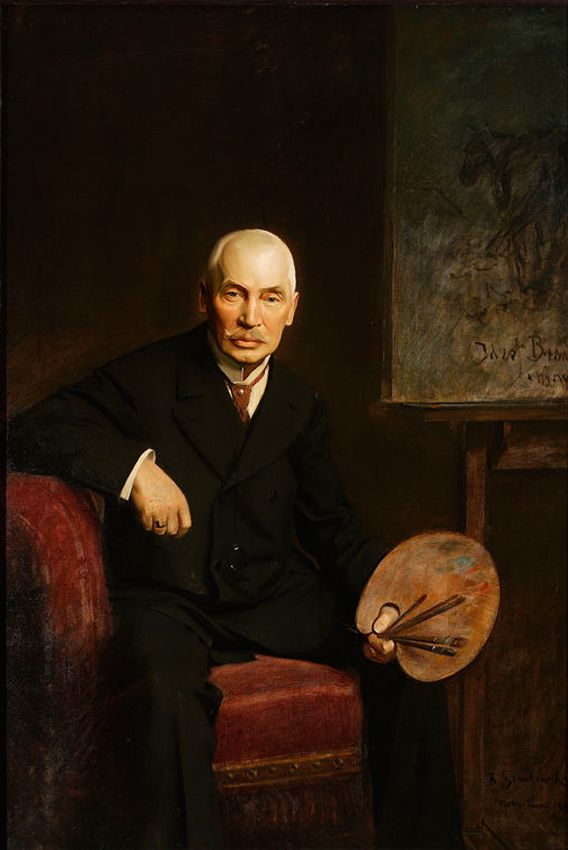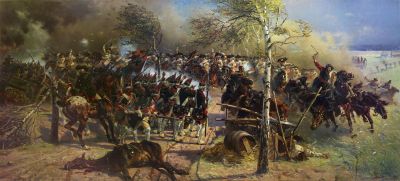Józef Brandt
Mediathek Sorted
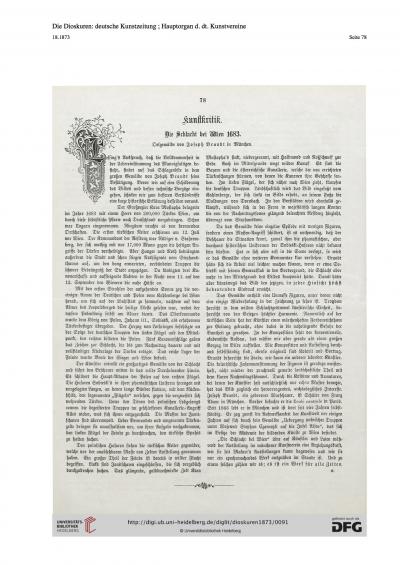
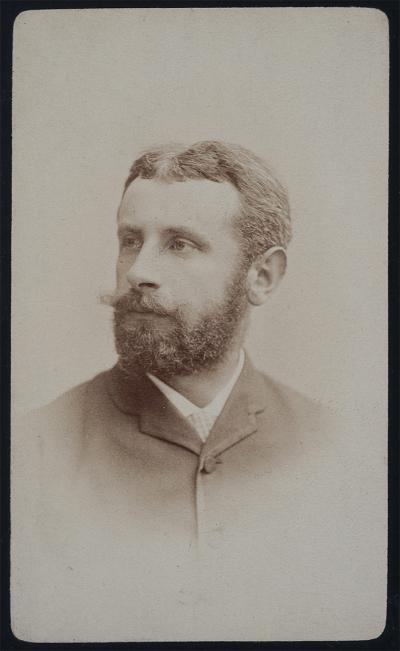
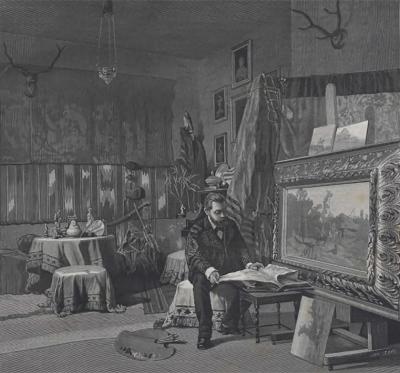
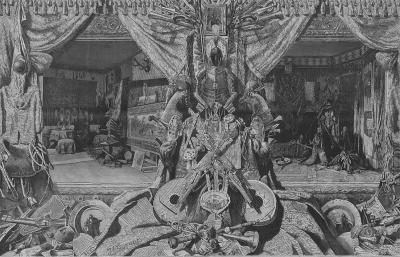
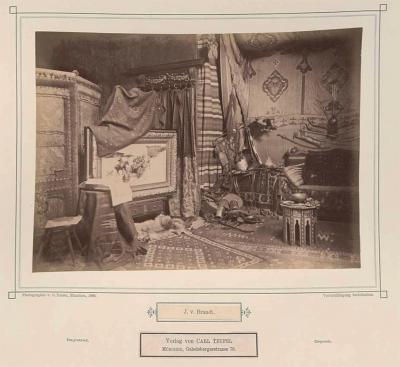
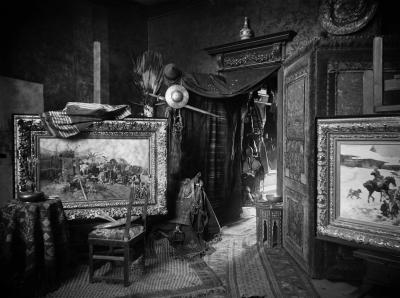
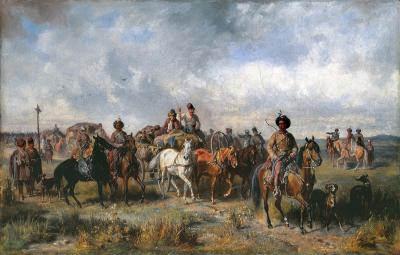

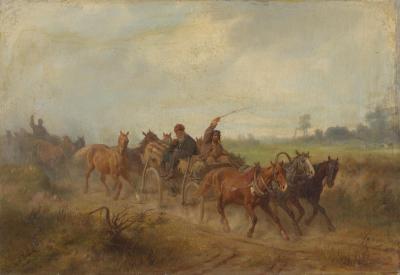
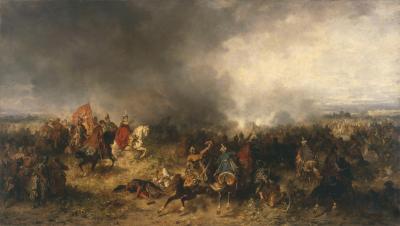
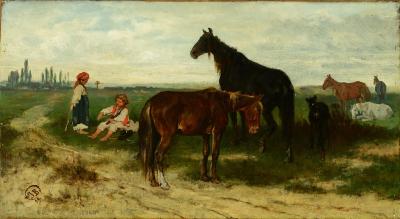
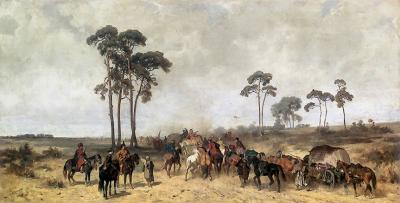
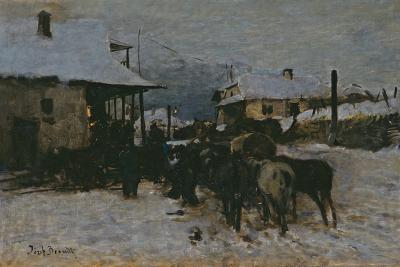
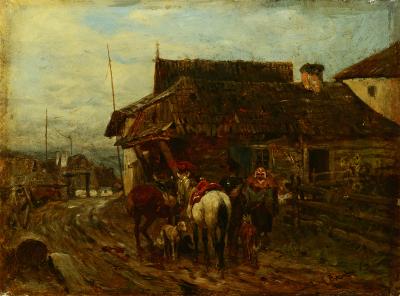
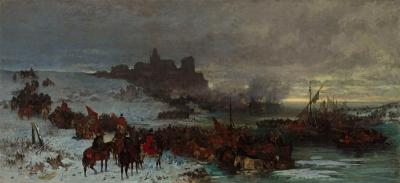
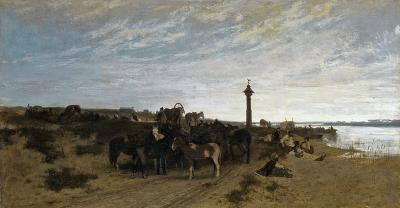
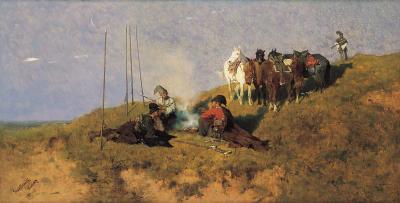
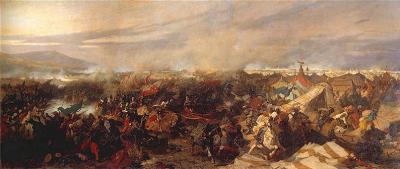
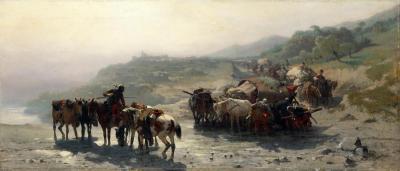
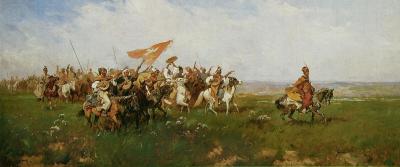

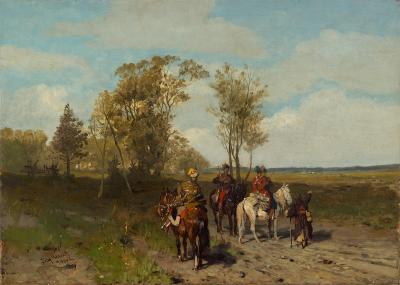
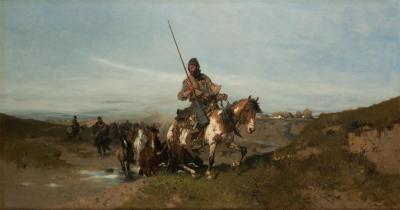
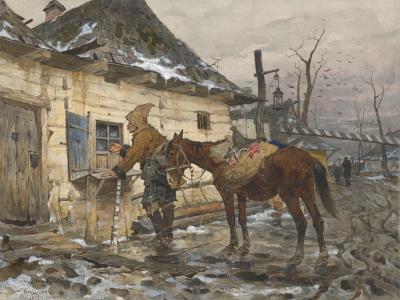
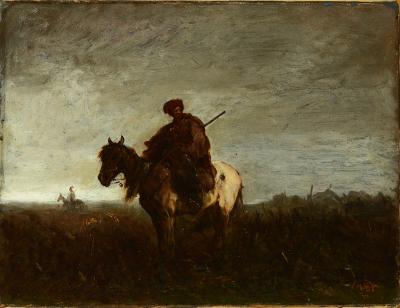
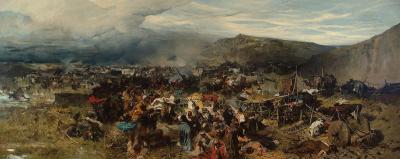
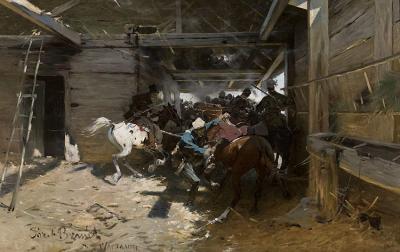
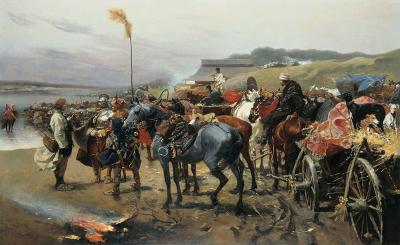
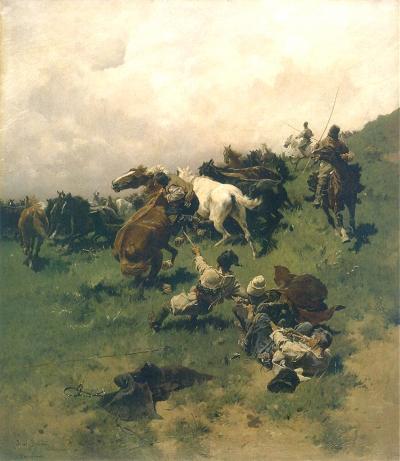
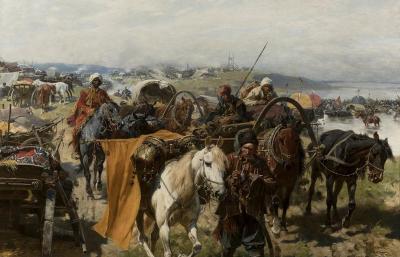
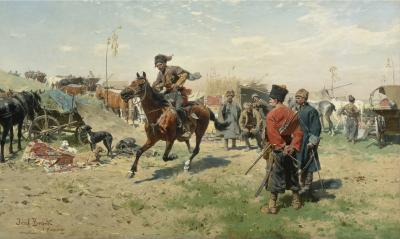
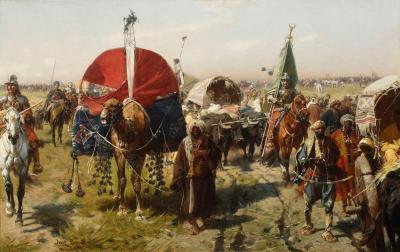

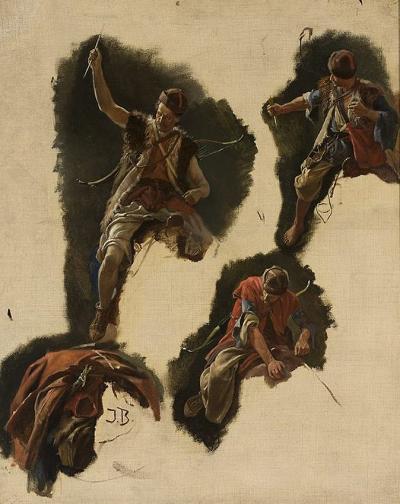
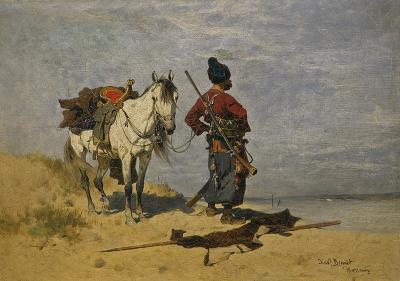
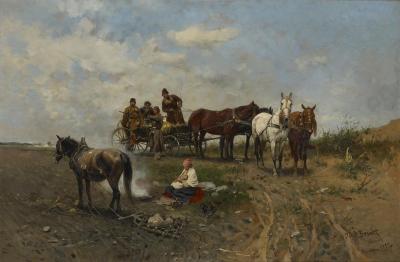
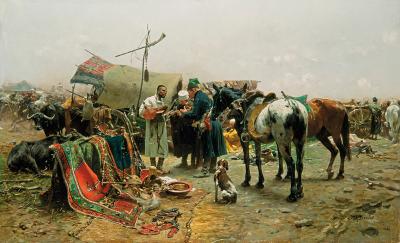
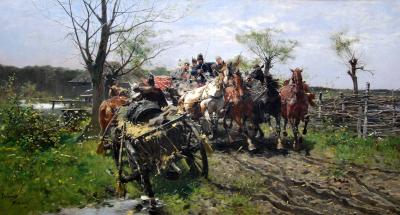

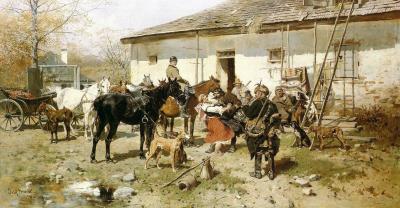
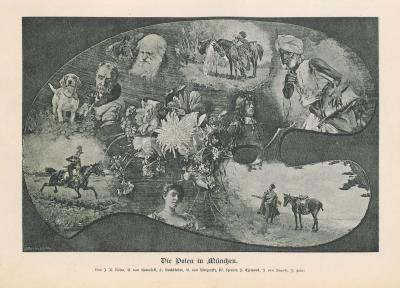
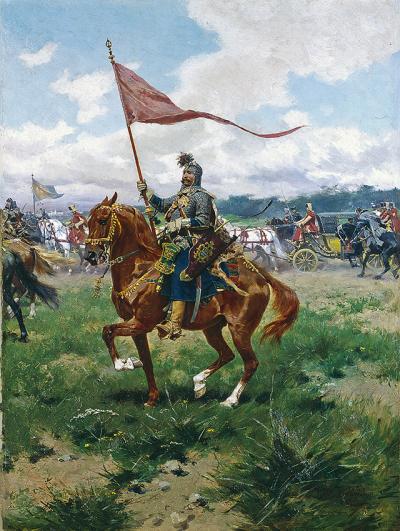
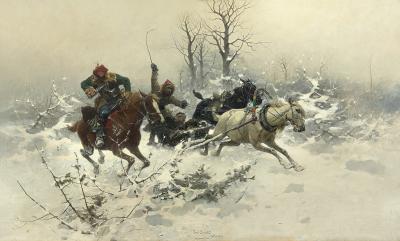
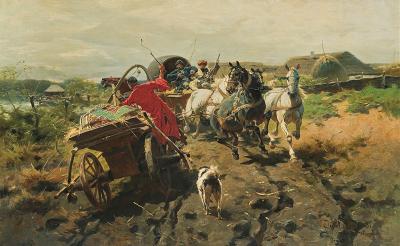
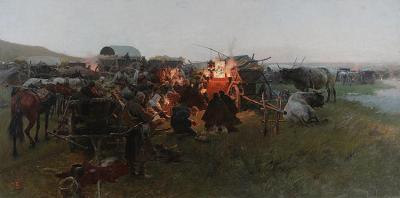
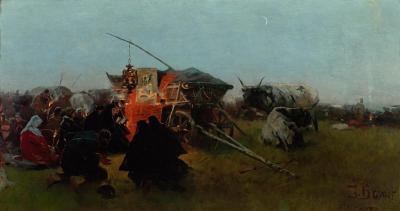
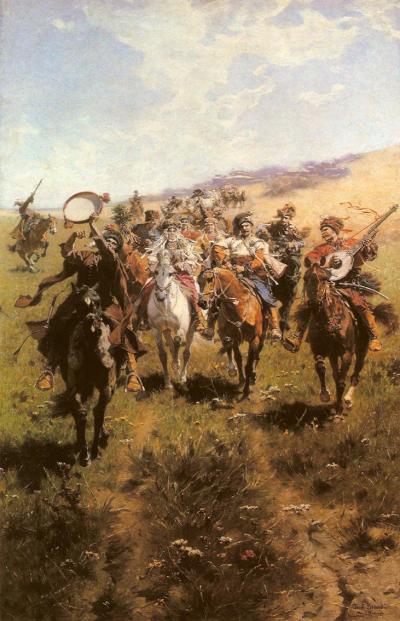
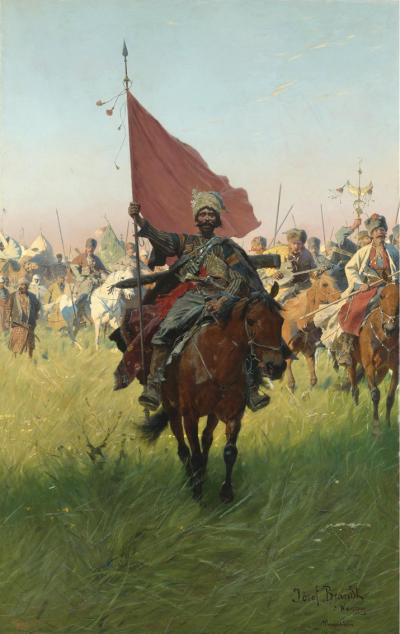
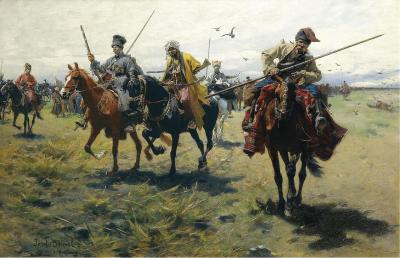
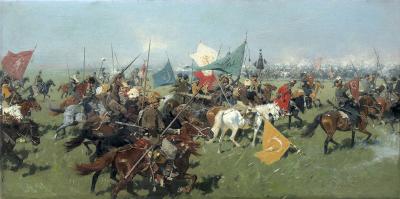

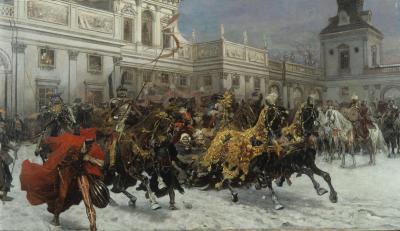
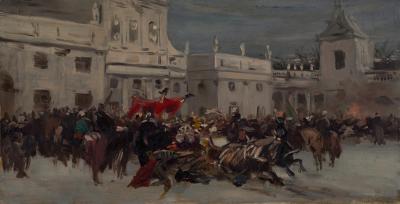

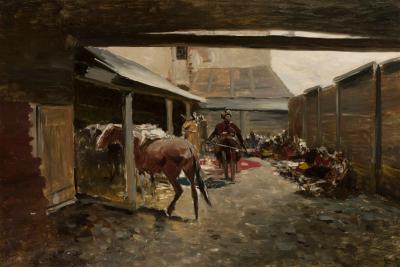
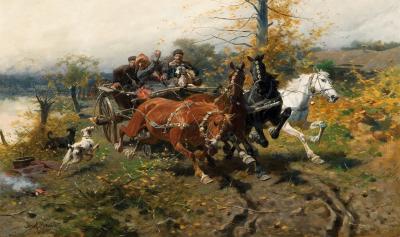
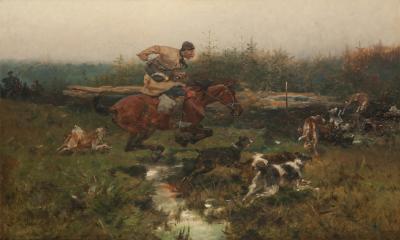
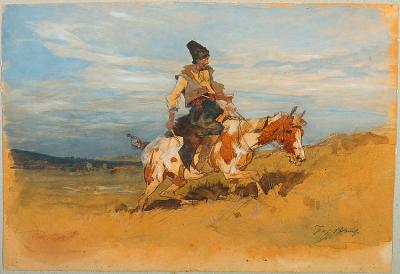
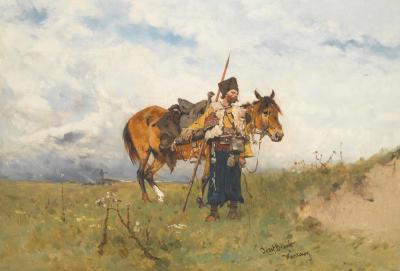
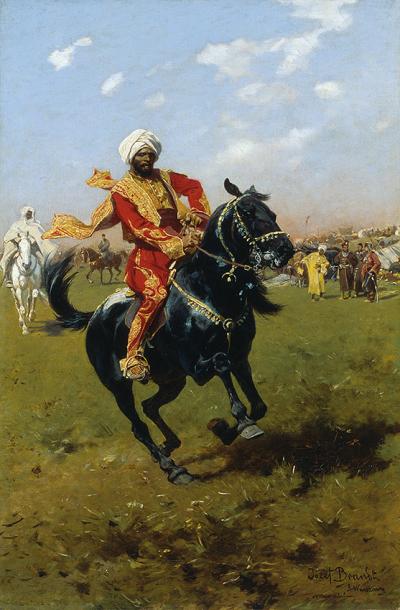

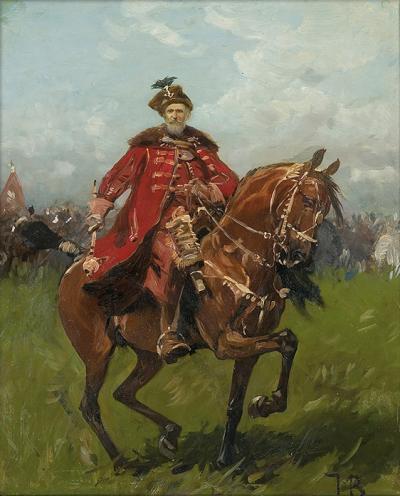
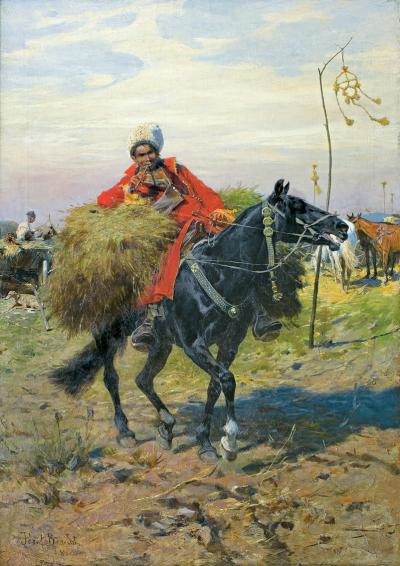
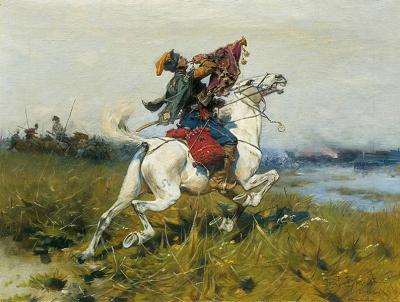
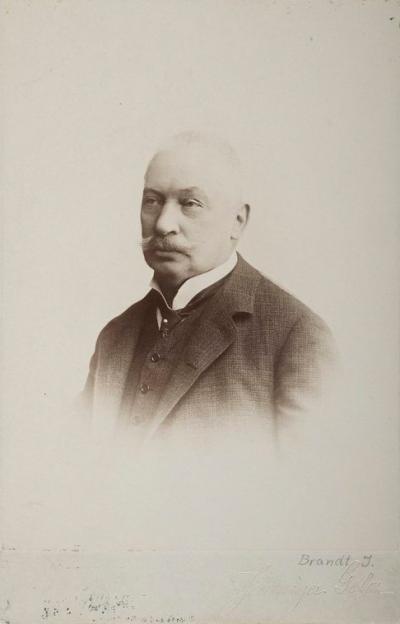

On the one hand Brandt's artistic success, his lavishly furnished studio, the collection associated with it, and his proximity to the royal family, enabled him to claim a social position similar to that of Makart, the so-called "artists' prince" of the era; and on the other, to the classical Munich "painter-prince" Franz von Lenbach (1836-1904), also a student of Piloty, Friedrich August von Kaulbach (1850-1920) and Franz von Stuck (1863-1928). While Brandt had an aristocratic background, Makart, Lenbach and Stuck all came from simple families. Makart was the son of a room keeper at Salzburg's Mirabell Castle, Lenbach was the son of a master builder from Schrobenhausen, Stuck was a miller's son from Tettenweis in the district of Passau. Kaulbach's father was the history painter Friedrich Kaulbach, a cousin of the director of the Munich Art Academy, Wilhelm von Kaulbach. But it was neither an inherited nor a conferred aristocratic title that made the painters "artist princes", but the visit of the Prince Regent to their studios,[8] where the sovereign and the "aristocrat of genius", as the art writer Friedrich Pecht (1814-1903) described the painter Wilhelm von Kaulbach,[9] could meet on equal terms. The "painter prince" cultivated "contacts with the greats of this world", writes Pecht about Piloty.[10]
Brandt, Lenbach, Kaulbach, Stuck and many other Munich artists of the time orientated themselves around Makart and designed their studios as meeting points for high society.[11] Lenbach opened his studio tor the nobility and passing aristocracy, Kaulbach displayed his art treasures from Tintoretto to Tiepolo during fixed opening hours, and Stuck arranged his painting studio to look like an architectural consecration area. From the 1860s onwards Munich travel guides began to feature the addresses and, in some cases, the opening hours of the artist's studios in order to guide the streams of tourists to the right places. English-speaking guides highlighted Brandt's studio and described its owner as an example of "a particularly successful master of the exotic genre and owner of an out-of-the-ordinary showroom".[12]
In contrast to Brandt, the Germans in Munich lived in representative villas where the studio was the centre of attention. During this time Lenbach 1885, Kaulbach 1887 and Stuck 1898,[13] were given personal aristocratic titles and overwhelmed with orders and offices. However, Brandt did not have to hide behind his colleagues. As early as 1877 he married Helena von Woyciechowski Pruszak/z Woyciechowskich Pruszakowa, owner of the Orońsko estate and a representative manor house [14] fifteen kilometres south-west of the Mazovian town of Radom in the Russian-ruled Poland Congress. From then on he worked there in a painting academy that he organised during the summer months along with other painters from the Polish artists' colony. In 1878 he was appointed honorary professor at the Munich Academy of Fine Arts, and in 1898 he was awarded the Bavarian Maximilian Order for Science and Art.
[8] Brigitte Langer: Das Münchener Künstleratelier des Historismus, Dachau 1992, pages 51, 66
[9] Friedrich Pecht: Deutsche Künstler des neunzehnten Jahrhunderts. Studien und Erinnerungen, 2. Reihe, Nördlingen, 2. Auflage, 1887, page 96
[10] Friedrich Pecht: Ein Malerfürst der Gegenwart, in: Die Gartenlaube, 1880, Heft 40, page 651
[11] Langer 1992 (see note 8), page 66-74
[12] Ibid, page 55 f.
[13] Birgit Joos: „Bauernsohn, der zum Fürsten gedieh“. Die Inszenierungsstrategien der Künstlerfürsten im Historismus, in: Plurale. Zeitschrift für Denkversionen, 5, 2005, page 203-213
[14] The mansion, now known as the Pałac Józefa Brandta, is a building in the style of an Italian villa from the Neorenaissance period in the second half of the 19. century. It was presumably designed by the architect Francesco/Franciszek Maria Lanci (1799-1875). It was plundered during the First World War by German troops whilst Brandt was still alive. Now it houses the Centre for Polish Sculpture/Centrum Rzeźby Polskiej w Orońsku; online: http://www.rzezba-oronsko.pl/EN/index.php?jozef_brandt%E2%80%99s_palace,41 (called up on 5.11.2017)





















































































